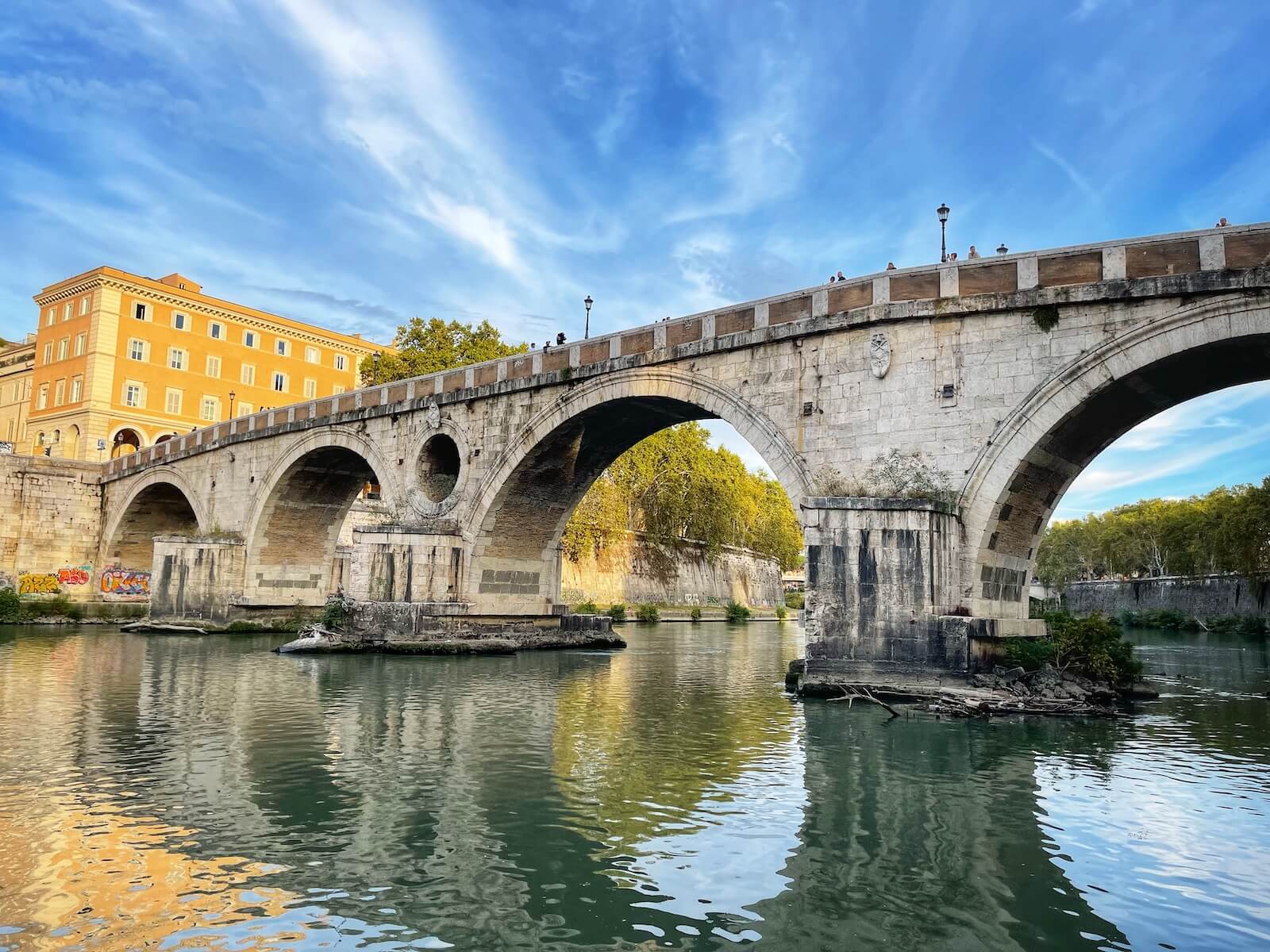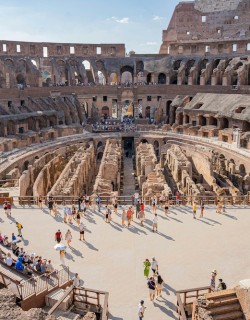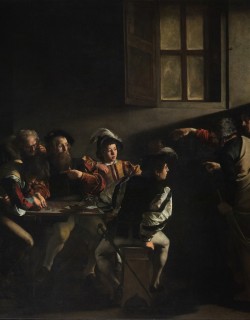Bridges have always played a key role in the story of Rome. Like the ligaments and tendons of the human body, bridges are the vital connective tissue that allow river-side cities to function, facilitating the passage of people and goods through the urban fabric. From its earliest days, the construction and maintenance of bridges was considered a vital aspect of infrastructure in ancient Rome; wooden bridges were the first to ford the Tiber river, most famously the Pons Sublicius, a sacred river crossing whose maintenance was entrusted to the Roman high priests who subsequently became known as pontifices in recognition of their solemn task.
As Roman engineering knowhow developed, wooden bridges were replaced with more hardy structures made from stone. The renowned ability of the state’s bridge-builders facilitated the expansion of the empire’s borders (more than 900 Roman bridges are known to have dotted the lands once under Roman dominion), and many examples in Rome itself stand testament to their technical capacity even to this day.
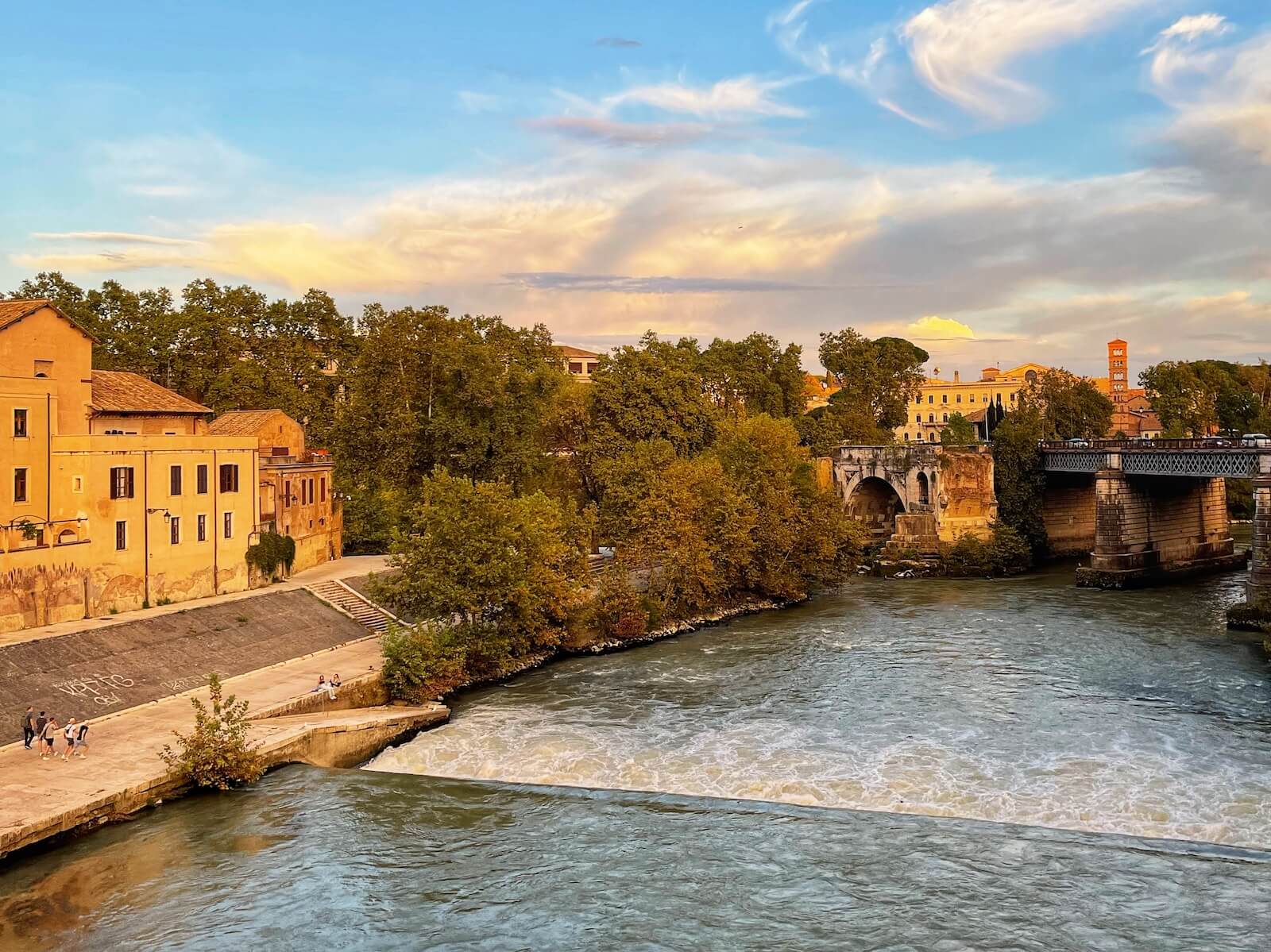
As much works of art as they are feats of engineering, the series of bridges that forge the mighty Tiber as it pulses its way through the city are testament to the great minds of the emperors and politicians, architects and town planners that have sought to enhance the urban fabric of Rome over the past 2,500 years. On our list we’ll encounter ancient bridges seemingly immune to the passage of time alongside harmonious Renaissance river crossings and modern spans that continue to facilitate movement across the Eternal City. Read on to discover the most beautiful bridges in Rome, and be sure to add them to your itinerary on your next trip to Rome!
Pons Fabricius

The best preserved of the city’s ancient bridges, the beautiful Pons Fabricius links the city to the island in the centre of the Tiber from its left bank. The current structure was built in 62 BC to replace an earlier wooden bridge on the site, and has been in continuous use ever since - a magnificent testament to Roman engineering. Thanks to an inscription carved into the bridge, we know that the ancient official responsible for its construction was one L. Fabricius, the city’s curator viarum (inspector of roads). Other inscriptions meanwhile tell us that the consuls M. Lollus and Q. Lepidus funded a restoration in 23 BC.
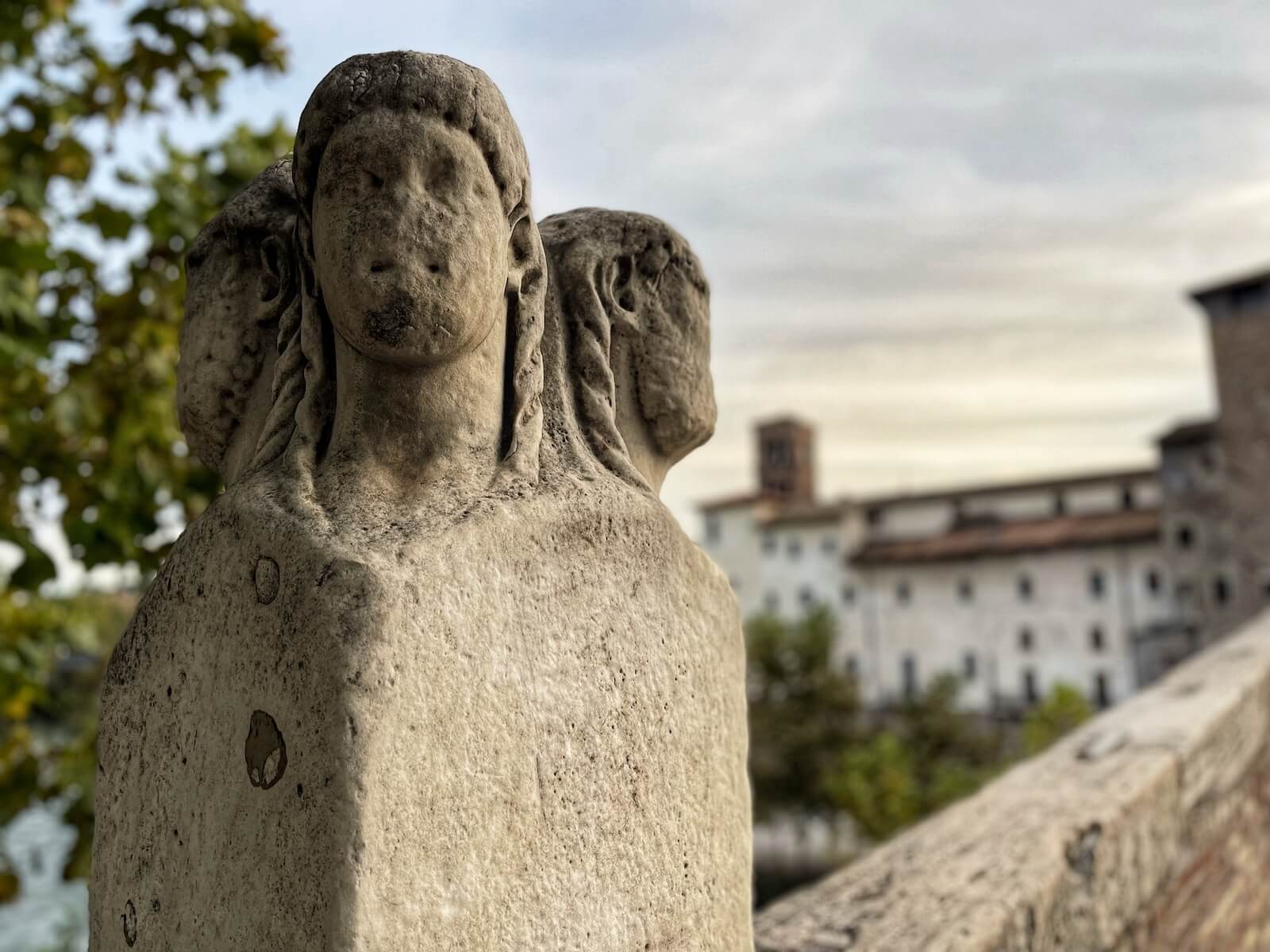
In the Middle Ages the bridge became known as the Ponte dei Giudei due to the proximity of the Jewish quarter, and the city’s Great Synagogue towers over the bridge today; from the Renaissance onwards it was also widely known as the Ponte dei Quattro Capi, or Bridge of the Four Faces, thanks to the sculptures of four-headed herms that held up the bridge’s original parapet and that now guard the entrance to the bridge.
A bogus but juicy popular legend recounts that the sculptures recall a bloody event from the violent 16th-century reign of Pope Sixtus V: after four architects the pope had called on to restore the bridge failed to agree on a plan of action, the irascible pontiff had them summarily executed and commissioned a four-headed sculpture on the spot as a warning to others unwilling or unable to heed his commands.
Ponte Cestio
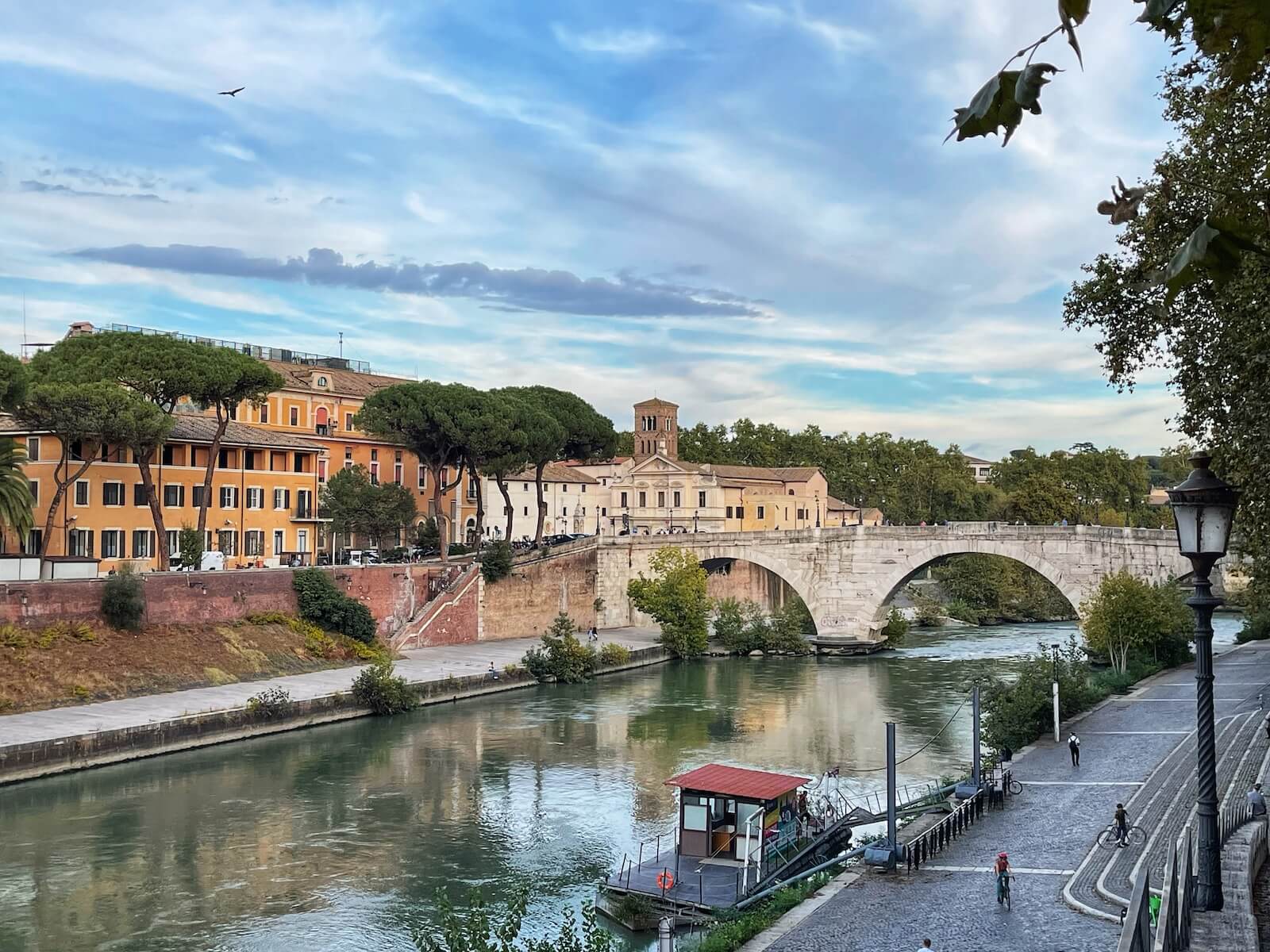
Continuing the course of the Pons Fabricius from the other side of the Tiber island to the river’s western bank, the Ponte Cestio leads to the neighbourhood of Trastevere. Built just a few years after the Pons Fabricius on the command of Roman governor Lucio Cestio in 46 BC, the bridge’s elegant stone arches have undergone numerous restorations over the centuries to protect them from the river’s powerful flow, most notably in 365 AD under the emperors Valentiniano, Valente and Graziano.
Subsequently the bridge became known as the Ponte Ferrato, or Iron Bridge, because of the numerous iron chains connected to the bridge that held fast the fleet of floating flour mills that were once positioned on the Tiber to help feed the ever-hungry city. Pop into the church of San Bartolomeo all’Isola on the nearby Tiber island and you’ll come across a 17th-century chapel dedicated to the millers’ guild, where pictorial decorations depict the ship mills floating on the river.
Ponte Sant’Angelo
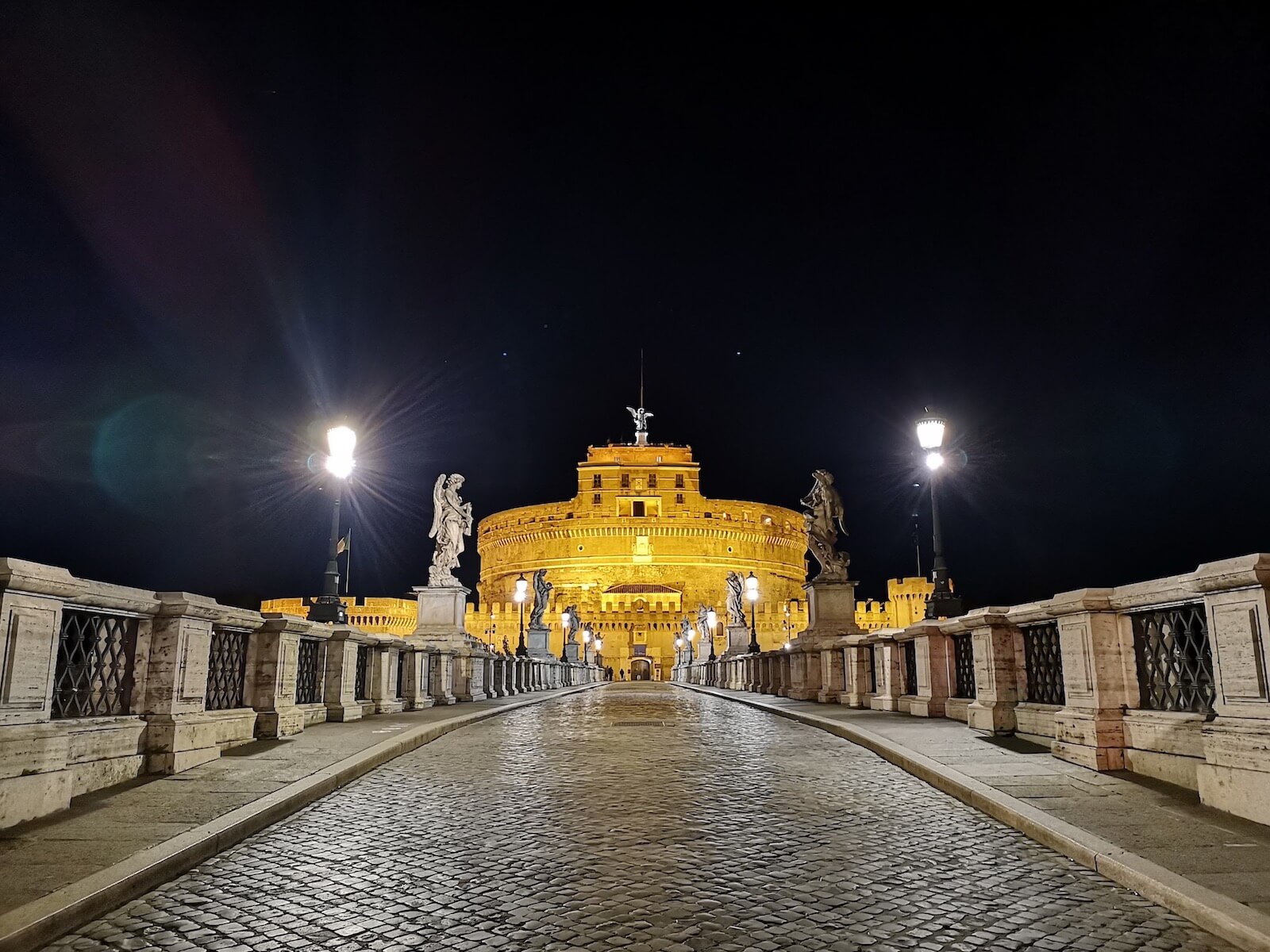
Magnificent Ponte Sant’Angelo links the massive bulk of Castel Sant’Angelo on the Tiber’s western bank to the city’s historic centre across the river, and it’s a good bet you’ll cross the venerable structure on any visit to Rome. Alongside the Pons Fabricius, the bridge is one of only two river crossings in Rome to have survived largely intact from antiquity, and was completed during the reign of the Emperor Hadrian in 134 AD. Imposing Castel Sant’Angelo itself began life as Hadrian’s own mausoleum before being repurposed variously as a fortress, prison and Papal palace over the centuries.
The bridge became the most important route to the Vatican for pilgrims in the Christian era, and is probably most famous for the stunning sculptures of angels bearing the instruments of Christ’s martyrdom that Baroque master Gianlorenzo Bernini installed here to guide pilgrims on their way as they flooded across the Tiber towards St. Peter’s in the 17th-century.
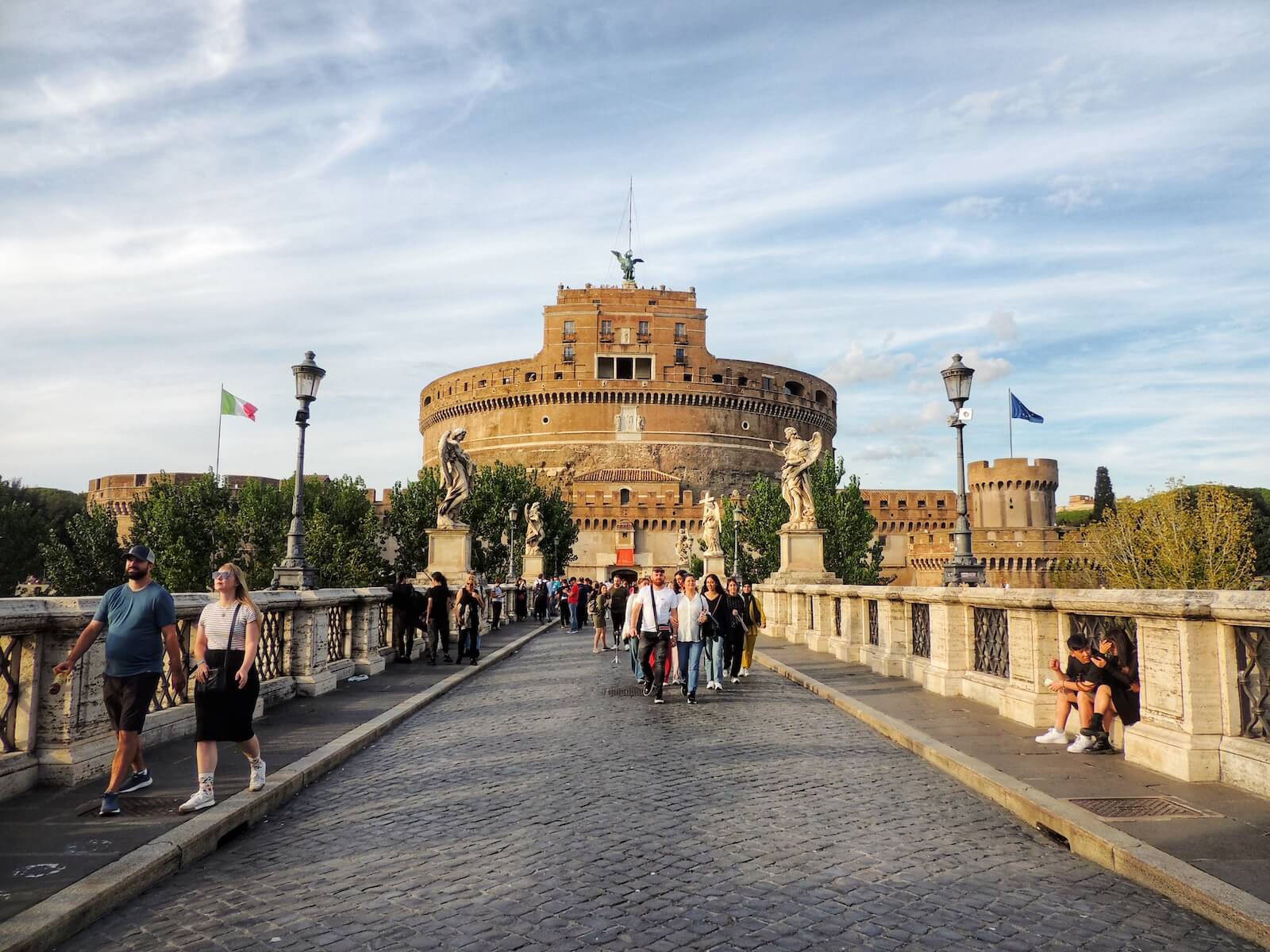
Early-modern citizens of Rome would have been familiar with the bridge for different, altogether darker reasons as well. The piazza in front of the bridge was for centuries one of the principal sites of public executions in the city, and the heads of the condemned were hung from the arches of the bridge as warnings for other would-be wrongdoers. Things reached a head, so to speak, in 1585, during the first year of the tyrannical Pope Sixtus V’s reign, when a local wag reported that there were ‘more heads on the Ponte than melons in the market.’ The gruesome displays are thankfully a thing of the past, and we can safely admire this stunning urban ensemble without fearing for our necks…
Pons Aemilius (The Ponte Rotto)
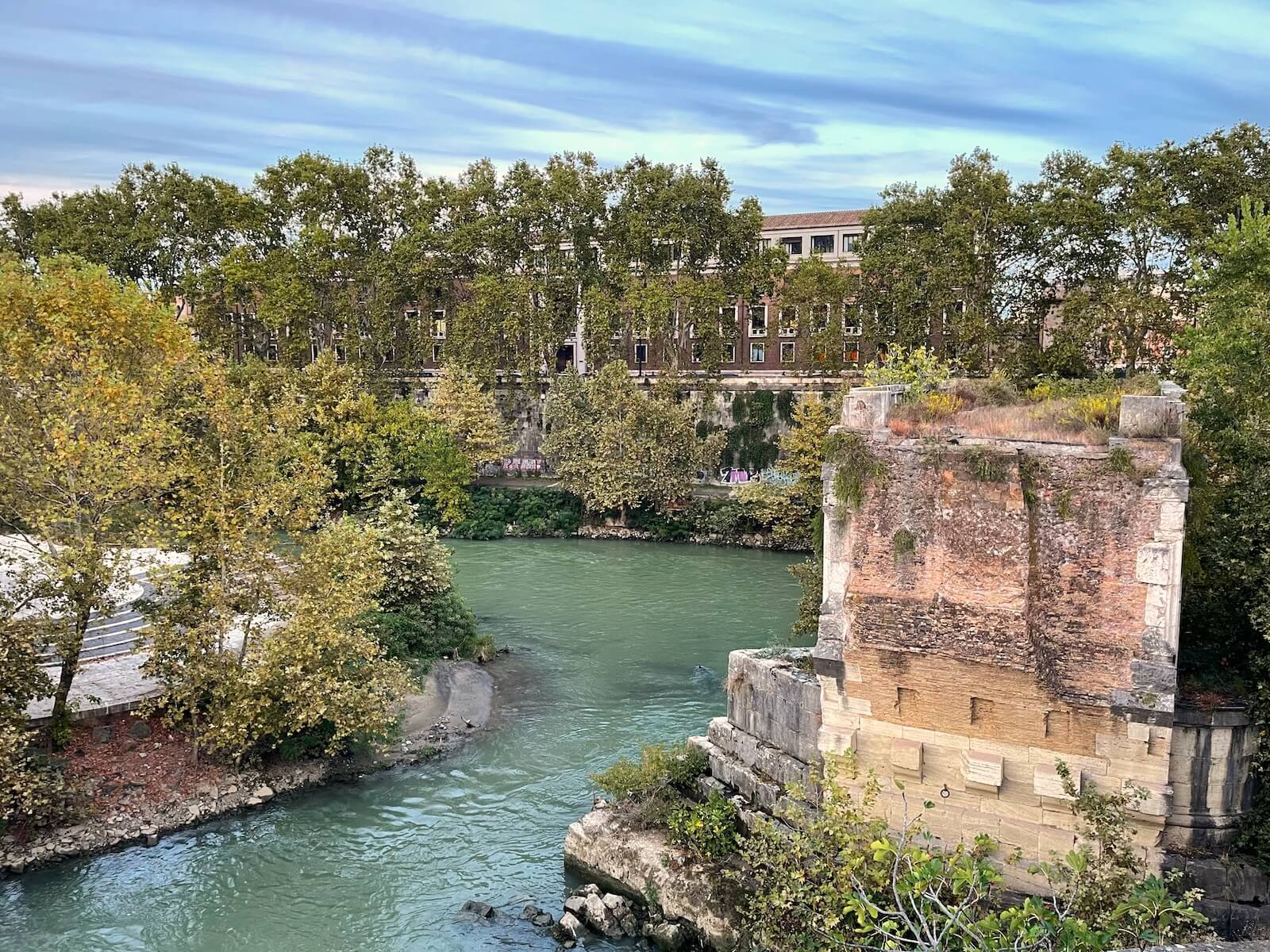
Of all the ancient remains in Rome, the so-called Ponte Rotto, or broken bridge, is one of the most fascinating. The venerable Pons Aemelius was the oldest bridge made from stone in the Roman world, and was constructed between 179 and 142 BC to replace an earlier wooden structure. Despite its sturdy construction, the bridge’s location on one of the most treacherous stretches of the Tiber meant that it was subjected to a series of damaging events and repairs over its chequered history.
The death-knell finally came on Christmas Eve in 1598, when a devastating flood in 1598 carried away half of the bridge in the rushing torrent. Its remaining section was cast adrift in the middle of the river, a vestigial memory of its former glory. Stripped of its function, the Pons Aemilius became the Ponte Rotto, or broken bridge. It quickly acquired a cult status amongst visitors to Rome, their imaginations fired by its picturesque and ruined splendour.
The construction of a new bridge finally got under way in 1887, and the far more stable (but much less interesting) Ponte Palatino rose to ford the river in the place of the battered old Pons Aemelius. As part of the works, most of the remainder of the old bridge had to be demolished with the exception of a single arch, which stands firm against the rushing river waters to this day.
Ponte Milvio
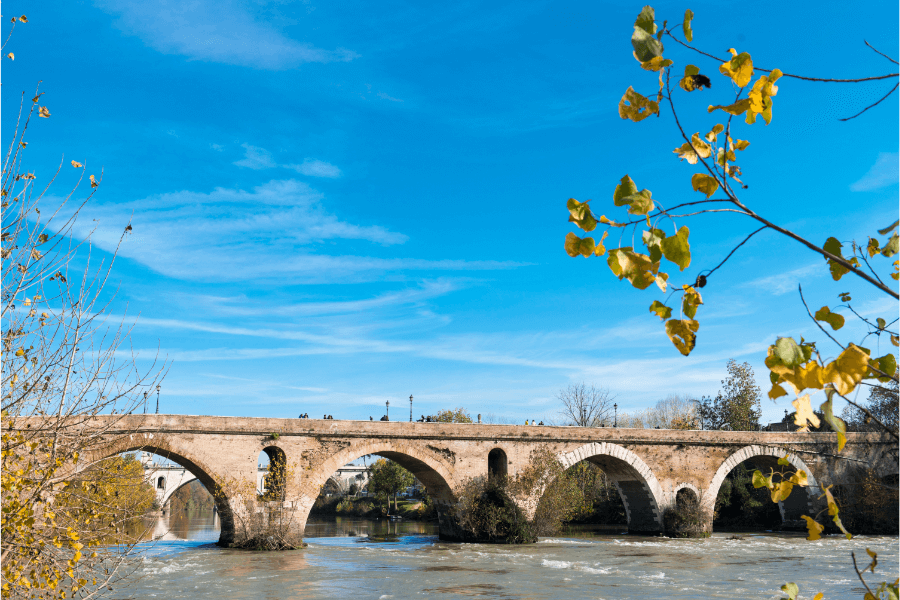
Originally built in the 2nd century AD by order of Roman consul Gaius Claudius Nero, this imposing stone bridge was the most northerly river crossing in the ancient city. The Ponte Milvio is indelibly associated with the emperor Constantine, whose victory over his rival Maxentius here in the year 312 was put down to divine intervention: According to legend Constantine had a vision of a cross in the sky the night before battle, accompanied with the inscription in hoc signo vinces - ‘in this sign you shall conquer.’ So said, so done: Constantine’s troops routed the enemy (as immortalised in a stunning Raphael fresco in the Vatican Museums); the new emperor accepted Christianity as the true faith, legalising its worship and converting himself, changing the course of history. Or so the story goes.
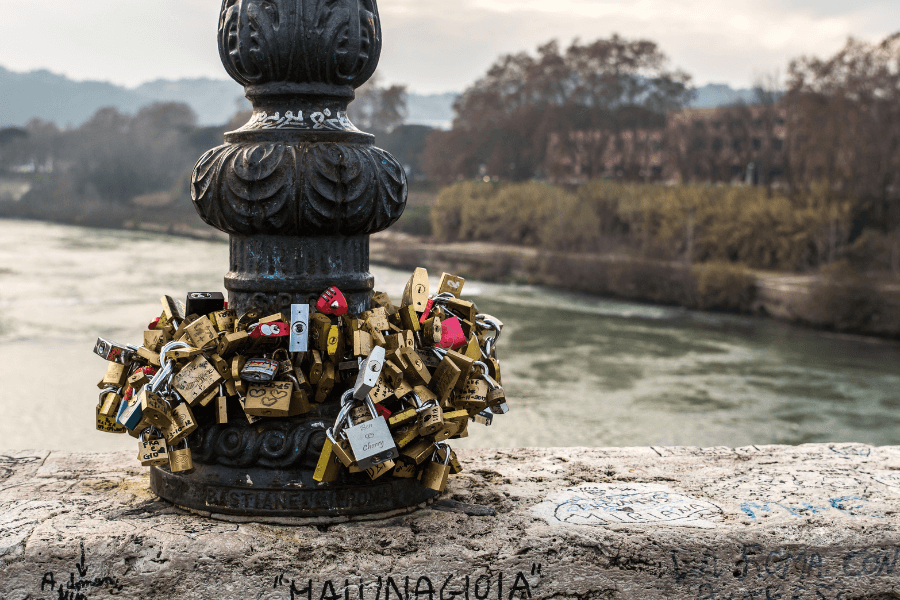
Ponte Milvio has also long had a place in the hearts of Romans for more intimate reasons. In antiquity it was known as a site for amorous trysts, with the historian Tacitus describing how it was ‘famed for its nocturnal attractions.’ The author saucily goes on to assert that Nero was a regular habitue of the bridge after dark, off in search of those forbidden fruits.
In more recent times the Ponte Milvio’s romantic associations have continued with the habit of loved-up Roman couples attaching padlocks inscribed with their initials to the bridge before tossing the keys into the Tiber as a demonstration of their unbreakable bond. The padlocks are regularly removed over fears that they’ll affect the structural integrity of the venerable old bridge, but you’re likely to see a few as you pass by!
Ponte Sisto
The Ponte Sisto is Rome’s finest Renaissance bridge. Named after Pope Sixtus IV (who also lent his name to the Sistine Chapel), the bridge was commissioned to connect downtown Rome with the Trastevere quarter across the river as part of an ambitious campaign of public infrastructure, and was completed in 1479. Vasari recounts that the bridge’s elegant design was the work of Baccio Pontelli, who used the foundations of the ancient Pons Aurelius as a basis for the project, although its authorship remains uncertain. What is certain is that the bridge is an architectural masterpiece, with its four sweeping arches exceptional for their harmony and proportion.
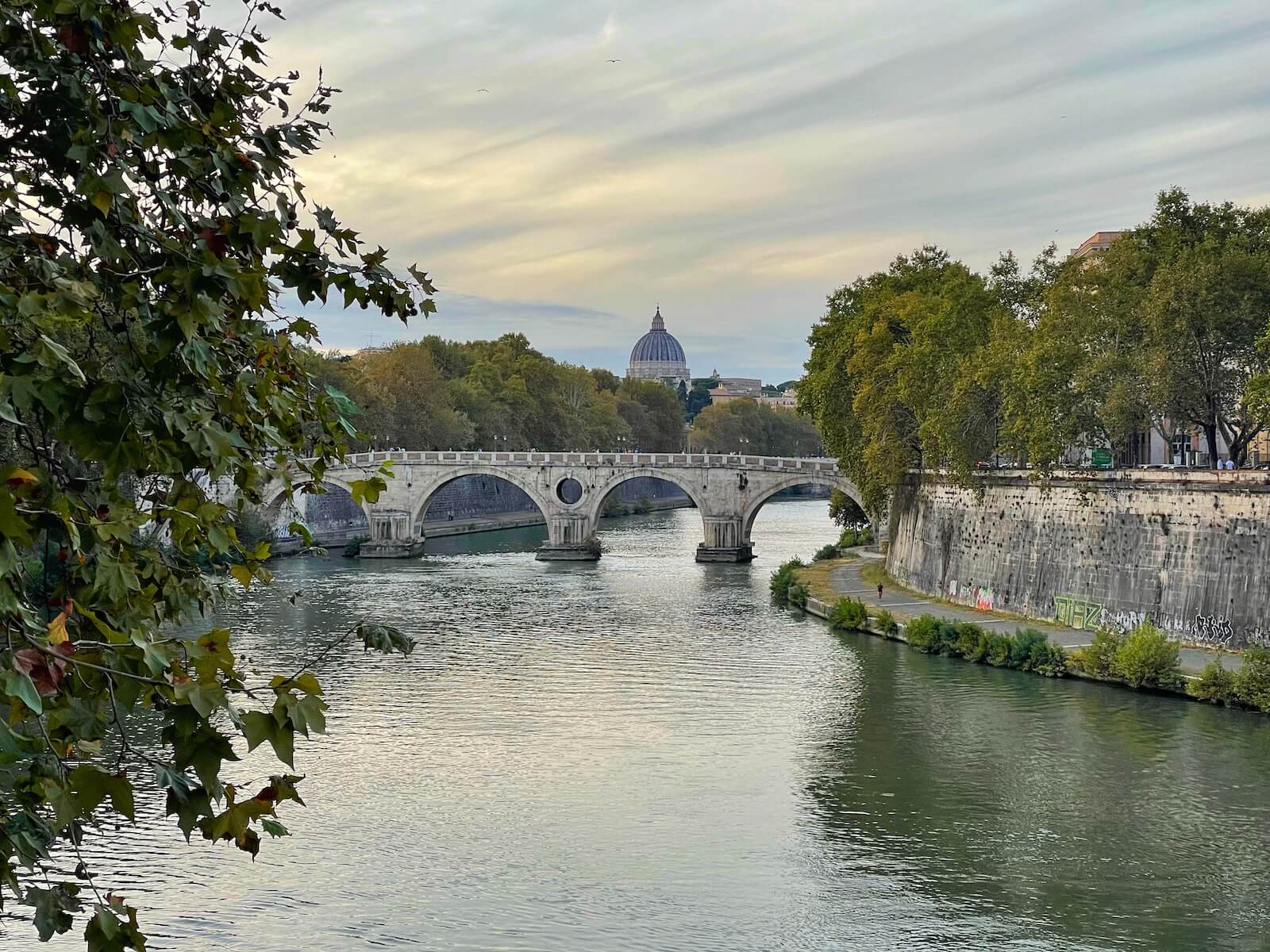
The distinctive hole or oculus (eye in Latin) that you see at the centre of the bridge had a more than decorative function: the Tiber was terribly prone to flooding, and giving the water a means of escape reduced the chances of the bridge collapsing under the immense pressure of floodwater.
The oculus turned out to be a helpful barometer for the seriousness of any given flood too: whenever the Tiber’s waters began to flow through the hole, as they did during the devastating flood of Christmas Day 1598 that washed away the Pons Aemilius downriver, it was time to escape to higher ground. Mercifully, Tiber floods are a thing of the past thanks to the massive 40-foot high embankments built to contain the mighty river in the 1920s.
Ponte Umberto I
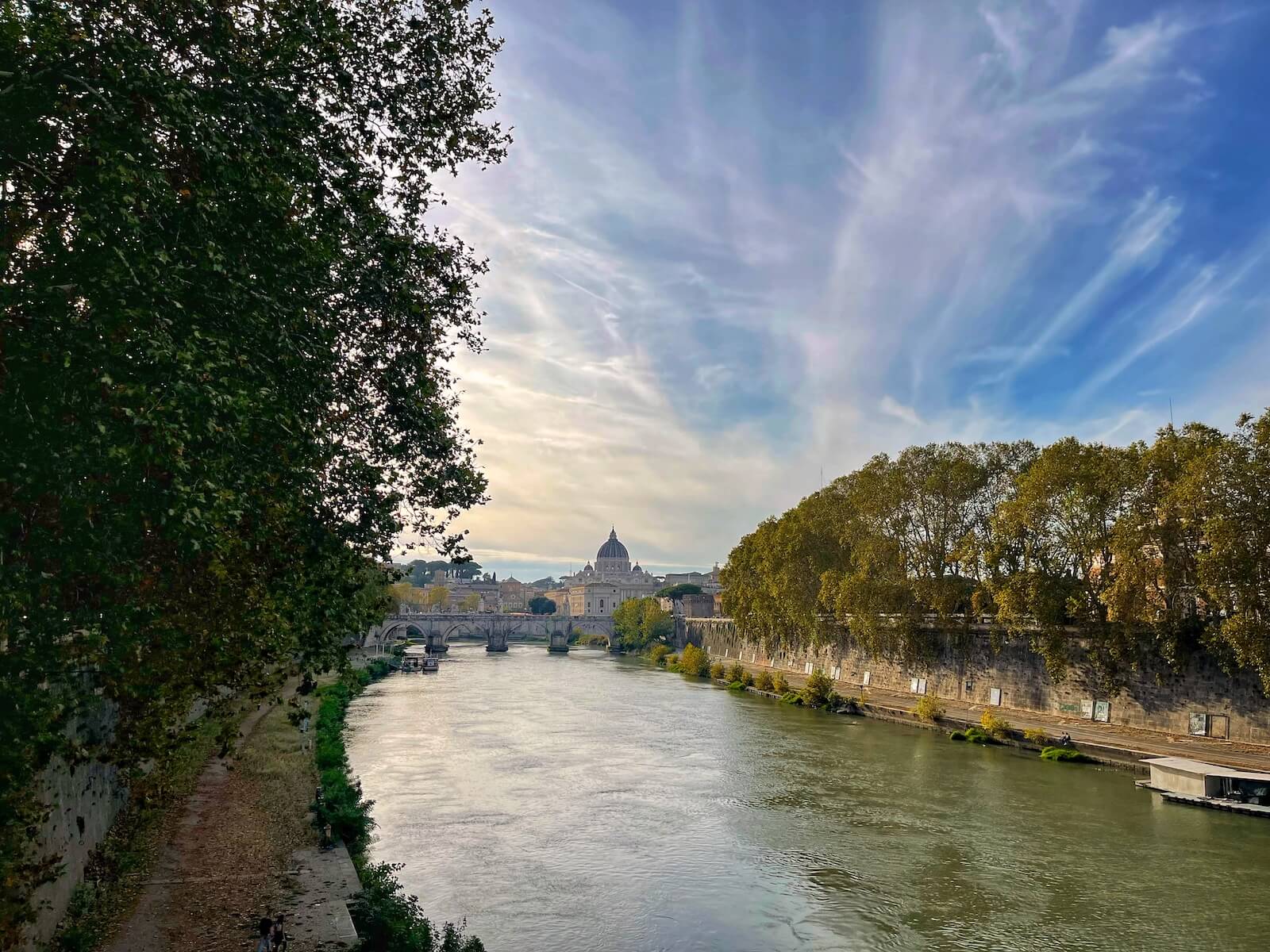
One of downtown Rome’s more modern bridges, the Ponte Umberto I is perhaps more noteworthy for the sensational views it offers than for the bridge itself. Dedicated to King Umberto 1st, the bridge was completed in 1895 - five years before the king’s assassination - and connects the massive, overblown Palace of Justice to downtown Rome.
Looking down the length of the river towards the Vatican City and St. Peter’s basilica, the panorama offered from the bridge is one of Rome’s finest. Trees frame the scene on both sides of the Tiber’s lazy meandering course, with the statue-lined Ponte Sant’Angelo and the unmistakable form of Michelangelo’s dome at St. Peter’s spectacularly picked out against the sky. Sunset is the best time to take in the display, when the clouds form into Baroque patterns and the heavens turn a thousand shades of orange. Rome, seen from its bridges, is quite the sight!
We hope you enjoyed our guide to the most beautiful bridges in Rome! Through Eternity Tours offer award-winning itineraries in the Eternal City. From the jaw-dropping highlights of the Vatican Museums and the Colosseum to off-the-beaten-path gems that only locals know, join our small-group and private tours of Rome to discover the Eternal City at its best.

